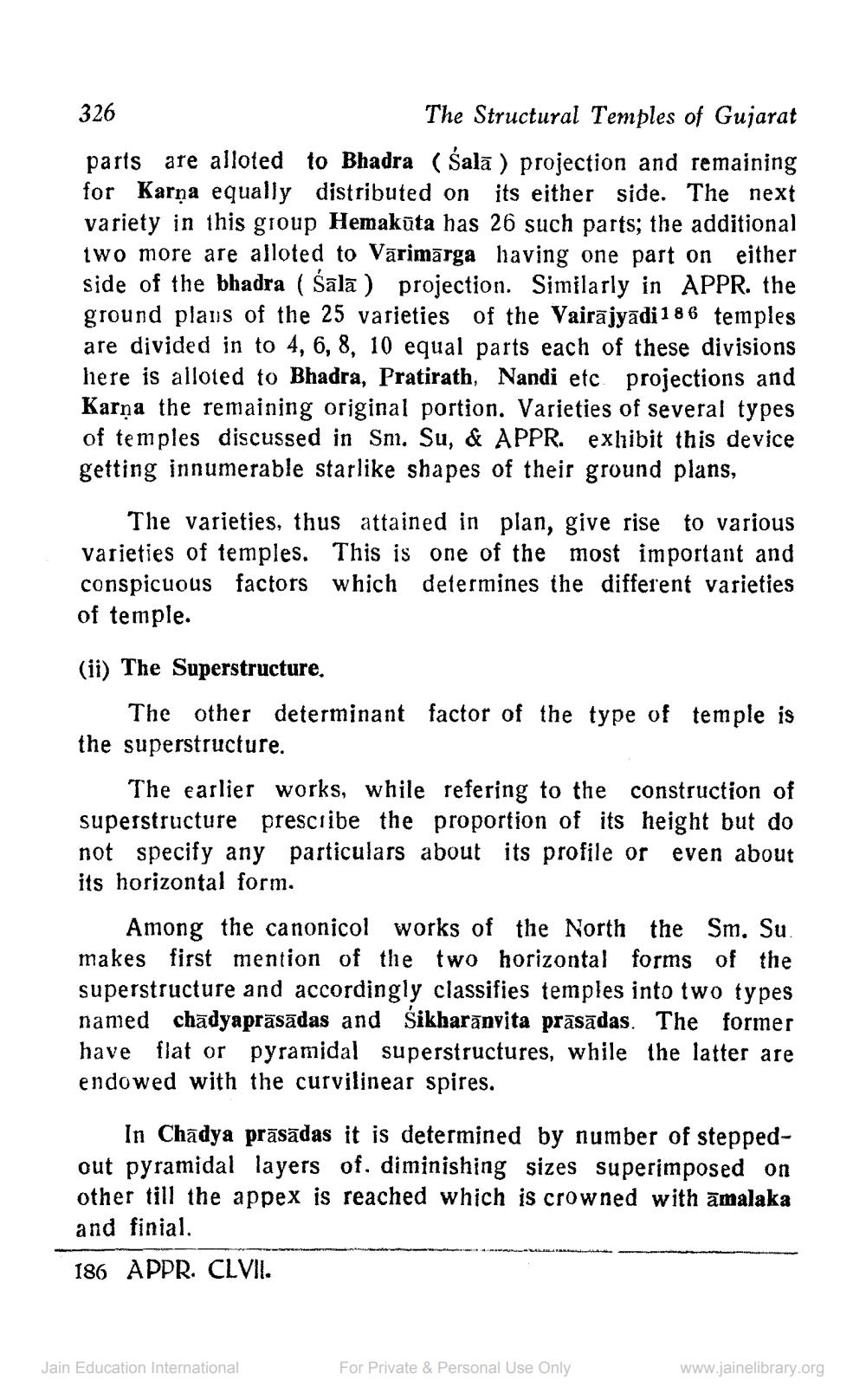________________
326
The Structural Temples of Gujarat parts are alloted to Bhadra (Salā) projection and remaining for Karņa equally distributed on its either side. The next variety in this group Hemakūta has 26 such parts; the additional two more are alloted to Vārimārga having one part on either side of the bhadra ( Šala ) projection. Similarly in APPR. the ground plans of the 25 varieties of the Vairājyādi 186 temples are divided in to 4, 6, 8, 10 equal parts each of these divisions here is alloted to Bhadra, Pratirath, Nandi etc. projections and Karņa the remaining original portion. Varieties of several types of temples discussed in Sm. Su, & APPR. exhibit this device getting innumerable starlike shapes of their ground plans,
The varieties, thus attained in plan, give rise to various varieties of temples. This is one of the most important and conspicuous factors which determines the different varieties of temple.
(ii) The Superstructure.
The other determinant factor of the type of temple is the superstructure.
The earlier works, while refering to the construction of superstructure prescribe the proportion of its height but do not specify any particulars about its profile or even about its horizontal form.
Among the canonicol works of the North the Sm. Su. makes first mention of the two horizontal forms of the superstructure and accordingly classifies temples into two types named chadyaprāsādas and sikharānvita prāsādas. The former have flat or pyramidal superstructures, while the latter are endowed with the curvilinear spires.
In Chādya prāsādas it is determined by number of steppedout pyramidal layers of. diminishing sizes superimposed on other till the appex is reached which is crowned with āmalaka and finial. 186 APPR. CLVII.
Jain Education International
For Private & Personal Use Only
www.jainelibrary.org




